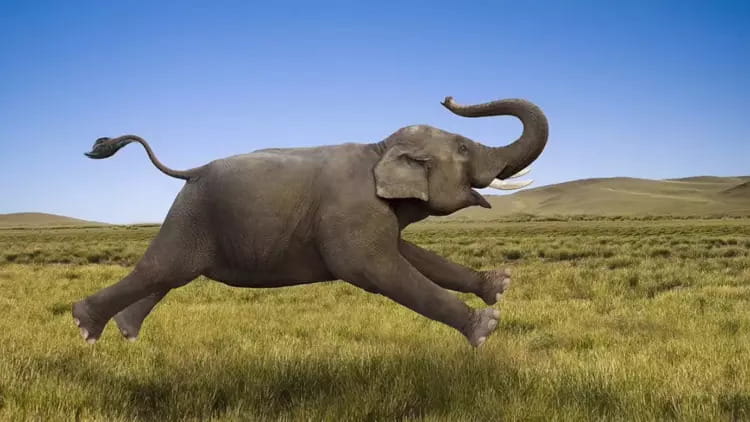12 Interesting Facts About Elephants
12 Interesting Facts About Elephants
1. Majestic Size and Strength
Elephants are renowned for their impressive size. African elephants, the larger of the two primary species, can weigh up to 6,000 kg (13,000 lbs) and stand up to 4 meters (13 feet) tall at the shoulder. Their Asian counterparts are slightly smaller but no less formidable. This massive size contributes to their strength, allowing them to uproot trees and move heavy obstacles with ease.
2. The Social Structure of Elephant Herds
Elephants are deeply social creatures. They live in matriarchal herds, led by an experienced female, the matriarch. Herds are primarily composed of females and their young, while adult males often lead solitary lives or form smaller, loose groups. The social bonds within these herds are strong, with members communicating and cooperating in raising the young and protecting the group.
3. Communication: A Language Beyond Sound
One of the most extraordinary aspects of elephants is their ability to communicate. They use a range of sounds, from trumpeting to rumbling, some of which are below the frequency humans can hear. These low-frequency sounds can travel over long distances, enabling communication over several kilometers. Additionally, elephants communicate through touch, visual signals, and even seismic signals felt through the ground.
4. The Incredible Trunk
An elephant’s trunk is a marvel of nature’s engineering. This versatile appendage is a fusion of the nose and upper lip and is incredibly strong, capable of lifting objects weighing over 350 kg (770 lbs). It’s also highly sensitive and dexterous, able to pick up small items like a single blade of grass. The trunk serves multiple functions, including breathing, smelling, touching, grasping, and sound production.
5. Their Memory: A Testament to Intelligence
Elephants have a proverbial memory, which is a testament to their high level of intelligence. They can remember water sources, migration routes, and even other elephants they haven’t seen for years. This remarkable memory is crucial for their survival, especially in the challenging environments they often inhabit.
6. The Importance of Tusks
Elephant tusks are elongated incisor teeth, made of ivory. Both male and female African elephants grow tusks, while in Asian elephants, it’s primarily the males. Tusks are used for digging, stripping bark from trees, and as weapons in fights. Unfortunately, their tusks have also made them targets for poaching.
7. Unique Foot Structure: The Gentle Walkers
Despite their massive size, elephants are surprisingly stealthy walkers. This is due to their unique foot structure. An elephant’s foot has a spongy pad at the bottom, which helps to distribute their weight and allows them to walk silently. This padding also acts as a shock absorber, helping them to move smoothly and prevent injuries.
8. Skin: A Protective Canvas
An elephant’s skin, while tough and rugged, is also sensitive. The skin, which can be up to 2.5 cm thick, protects them from external elements but also requires care. Elephants are often seen covering themselves in mud or dust, which acts as a sunscreen and insect repellent. Their skin is also crisscrossed with unique patterns, adding to their distinctive appearance.
9. The Role of Elephants in Ecosystems
Elephants play a critical role in their ecosystems. As ‘keystone species,’ they help shape their habitat in significant ways. Their movements through dense forest areas create pathways used by other animals. By feeding on trees and bushes, they help to maintain the savanna’s grasslands, and their dung is vital for seed dispersal, facilitating the spread of various plant species.
10. Emotional Depth and Mourning Rituals
Elephants are known for displaying complex emotions, including grief. They have been observed participating in what appear to be mourning rituals, gently touching the bones or carcasses of deceased elephants with their trunks and feet. This behavior indicates a level of emotional depth and social awareness that is rare in the animal kingdom.
11. Longevity and Life Cycle
Elephants have a life span similar to humans, often living into their 60s and 70s in the wild. Their long life cycle includes a lengthy gestation period of 22 months, the longest of any land animal. This extended period of development allows the young to be born with the advanced social and survival skills they need to thrive in their complex social structure.
12. Conservation: The Struggle Against Extinction
Today, elephants face significant threats from habitat loss and poaching. Both African and Asian elephant populations have declined dramatically, with some subspecies being critically endangered. Conservation efforts are crucial to their survival, involving habitat protection, anti-poaching initiatives, and global legal frameworks to control ivory trade.
